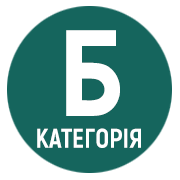INTERTEXTS OF CHILDREN’S LITERATURE IN THE METAL POETRY OF THE BAND NIGHTWISH
DOI:
https://doi.org/10.32782/2412-933X/2024-XX-5Keywords:
intertext, precedent text, metal poetry, children’s literatureAbstract
The article carries out an intertextual analysis of the songs of the Finnish symphonic metal band Nightwish, at the same time emphasizing the possibility of using the term “metal poetry” by analogy with “rock poetry”. Intertextuality is defined as one of the promising methodologies for examining song texts of this musical genre, which still remain on the periphery of philological studies. The use of intertexts (through allusion, quotation, etc.) based on precedent texts of children’s literature, which are literary fairy tales (“The Ugly Duckling”, “The Little Match Girl” by H.C. Andersen, stories about Peter Pan by J.M. Barrie), folklore and myths (Scandinavian, Karelian-Finnish, Germanic, British, ancient Greek), fantasy literature (books by J.R.R. Tolkien), world classics (“Romeo and Juliet” by W. Shakespeare, “A Christmas Carol” by C. Dickens). It was found that the main function of the use of a particular intertext is the disclosure of the leading motives in the songs, such as beauty and ugliness, the antithesis of childhood and adulthood, the road and the search for another world, the leader and the storyteller. It is noted that there is a high probability of correct awareness of intertextual connections by the recipients (listeners), since the main sources are world-famous works of children’s literature, the fantasy genre, canonical works of world literature and cultural phenomena (Disney films, the board game and the series books “Dungeons and Dragons”). It is noted that the author of the songs, Tuomas Holopainen, weaves into the canvas of his texts precisely those references that can be decoded by a wide range of recipients, regardless of their national cultural background, but taking into account the knowledge base of works of world culture. The use of intertexts makes metal poetry important for the popularization of world culture, interesting for recipients, and deepens the content and emotional connection with listeners.
References
Бацевич Ф. Основи комунікативної лінгвістики. Київ : Академія, 2004. 344 с.
Качак Т., Круль Л. Зарубіжна література для дітей. Київ : Академія, 2014. 416 с.
Коломієць Г. Рок-поезія: міф, ритуал й американська традиція у творчості Джима Моррісона : дис. ... канд. філол. наук : 10.01.04. Київ, 2004. 195 с.
Науменко Н. Дивосвіт англійської поезії в пісенній ліриці Стінга. Науковий вісник Міжнародного гуманітарного університету. Серія: Філологія. 2018. № 34, Т. 1. С. 61–65.
Науменко Н. Жанрові характеристики пісенного доробку Стінга. Вчені записки ТНУ імені В. І. Вернадського. Серія: Філологія. Соціальні комунікації. 2019. Т. 30 (69), № 4. С. 195–202.
Чорновол-Ткаченко Р. Теорія інтертекстуальності: цілі, завдання, методи. Вісник СумДУ. 2006. № 11, Т. 2. С. 82–87.
Fernandez E.E., Martinez I.J., Delgado L.H. How to learn with symphonic metal lyrics: an analysis of different songs and their relationship to literature within the framework of the audiovisual culture. Sound in motion: cinema, videogames, technologies and audiences // еd. by E. Encabo. Cambridge : Cambridge Scholars Publishing, 2018. P. 111–125.
Nightwish Lyrics. URL: https://www.azlyrics.com/n/nightwish.html (дата звернення: 02.02.2024).
The Nobel Prize in Literature 2016. URL: https://www.nobelprize.org/prizes/literature/2016/summary/(дата звернення: 01.02.2024).






